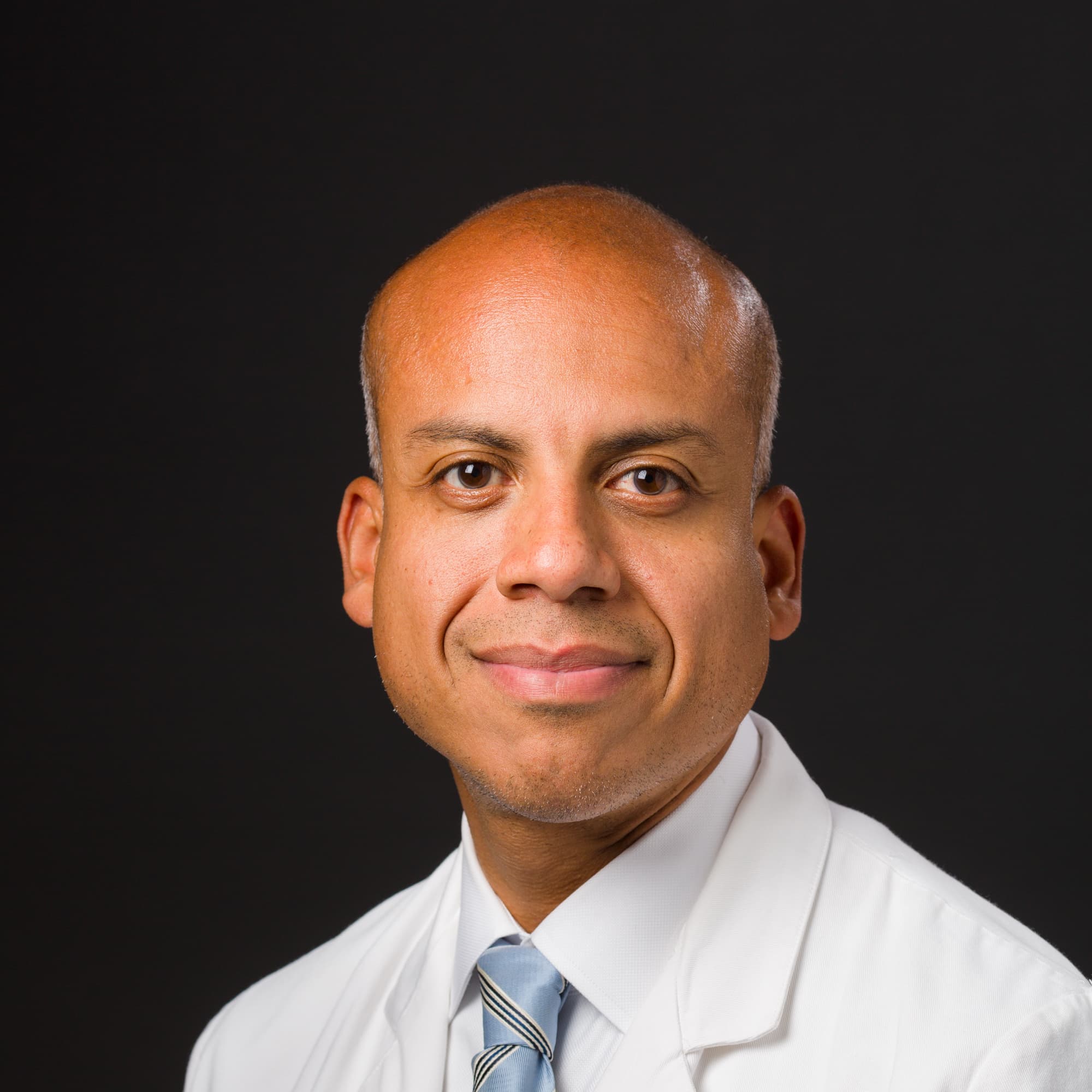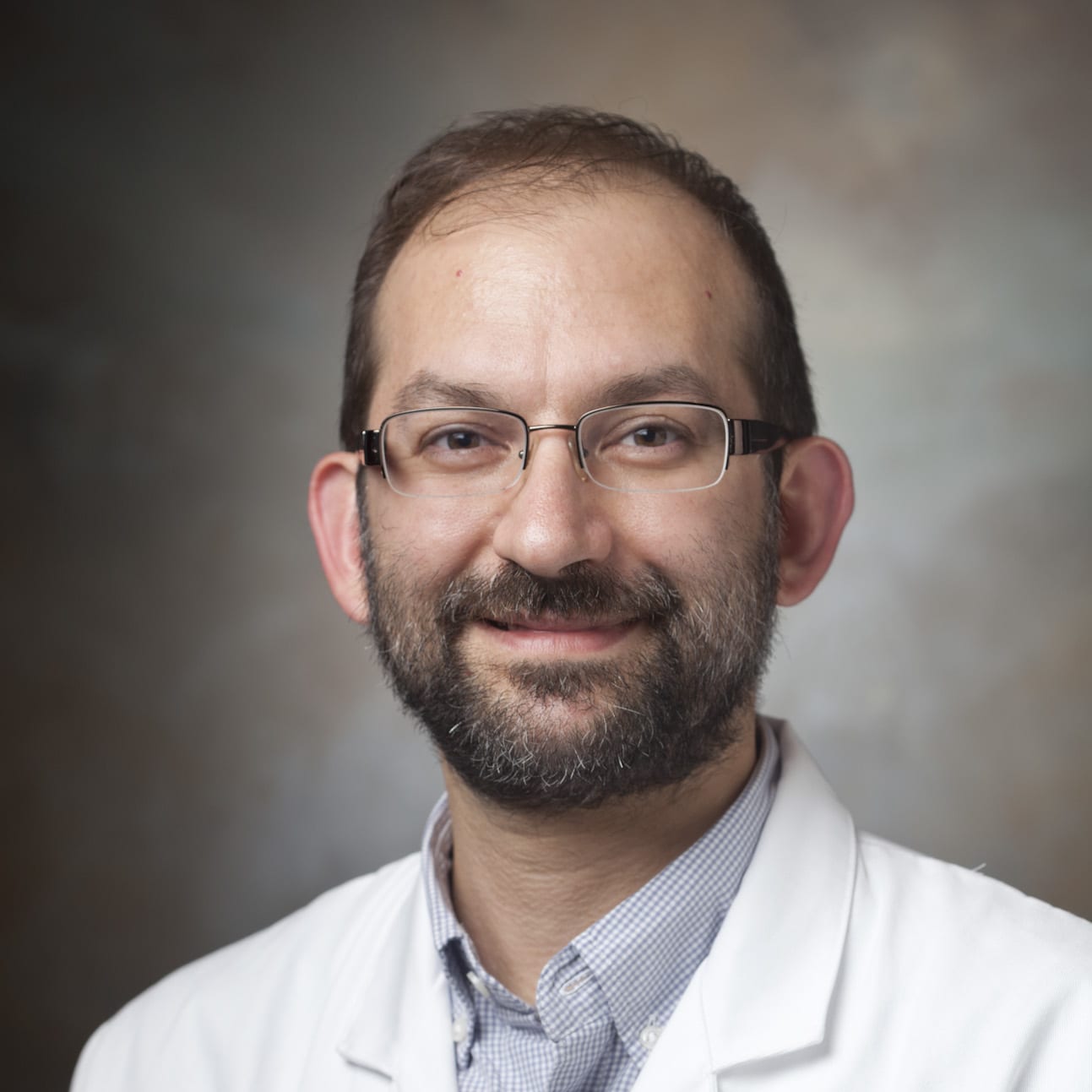Carotid Artery Angioplasty and Stenting
Definition
Carotid artery angioplasty and stenting is a minimally invasive medical procedure used to treat carotid artery stenosis, a narrowing of the carotid arteries due to plaque buildup. The procedure involves inserting a catheter with a balloon at its tip into the narrowed artery and inflating the balloon to widen the artery. A stent is then placed to keep the artery open and improve blood flow to the brain.
Related Specialists
Showing 3 of 10
Related Fact Sheets
Related Departments
Showing 3 of 26
Neurovascular Surgery
With the latest microsurgical and endovascular technologies, we offer unparalleled treatment to patients with all types of neurovascular disease affecting blood vessels in the brain and spinal cord. This includes aneurysms, vascular malformations, and artery and venous stenosis, or blockages. Our cutting-edge research also allows for more refined, personalized medicine. Our expert clinicians specialize in managing all types of brain, neck, and spinal cord vascular disorders. Our therapeutic treatment strategies include: Open microsurgery Less invasive endovascular (interventional) treatment Stereotactic radiation (Gamma Knife radiosurgery) RehabilitationNeuromuscular Medicine
We are dedicated to delivering expert primary and referral services for all disorders of the peripheral nerves and muscles. Our program is supported by the Muscular Dystrophy Association (MDA). As a tertiary referral site for complex neuromuscular conditions, we serve as consultants to general neurologists, internists, and many other specialists. We specialize in: ALS (amyotrophic lateral sclerosis or Lou Gehrig’s disease) Myasthenia Gravis Myopathy (including polymyositis, dermatomyositis, inclusion body myositis) Neuropathy (CIDP, CMT and other inherited neuropathies, Guillain-Barré, diabetic neuropathy) Muscular Dystrophy (including FSH, Duchene, Becker, Limb-Girdle, Myotonic, Oculopharyngeal) Stiff-Person Syndrome and related disorders Our neurologists have advanced training in neuromuscular disease and electromyography (assessing electrical activity in muscle). They have specialized knowledge in the science, clinical evaluation, or clinical management of disorders that affect cells in the central and peripheral nervous systems, muscles, and the junction between them. They offer greater expertise in the origin, mechanisms, diagnosis, and treatment of these disorders than general neurologists. Our electromyographers have expertise in assessing electrical activity in muscle and nerve conduction studies. We are one of the few programs in the Northeast with several electromyographers, who are expert in a specialized technique called single fiber EMG to test for myasthenia gravis. Our neuromuscular group works together as a team that includes medical assistants, clinical nurse coordinators, an MDA coordinator, resident staff, fellows, and attending physicians. Please bring the following items: A copy of your medical records pertaining to your condition, which should include MRIs, nerve conduction studies, and other testing and/or imaging available A current list of all medications and any allergies to medications Name and address of your primary care physician and any other specialists Your first visit will entail a comprehensive evaluation, and you will be asked for a detailed history of your condition. We will complete a thorough neurological examination, after which we will develop a plan of care. We will inform you if additional testing is needed, make recommendations regarding adjustments to current treatment regimens, or refer you to other physicians or consultants. The term EMG is often used to refer to both electromyography and nerve conduction studies. Electromyography is the technique of assessing the health of muscles. Nerve conduction studies assess the health of nerves. Together these techniques are used to investigate and diagnose the entire spectrum of neuromuscular disorders. Our electomyographers use the latest EMG equipment to perform all available specialized EMG techniques, including Quantitative EMG, Blink Reflex, Single Fiber EMG, and others. We use a specialized type of nerve conduction study, called the JollyVascular Surgery & Endovascular Therapy
At Yale Medicine, our team of highly trained vascular surgeons are here to help with a variety of circulation issues. This includes anything from blocked blood vessels and stubborn wounds to conditions that could lead to losing a limb. Our goal is to give complete care that's as easy on you as possible, which is why we focus on techniques that don't require major surgery, like treatments done inside the blood vessels themselves. Our doctors give personalized and complete care to adults with vascular problems. We rely on the newest and most advanced equipment and methods to diagnose and treat these conditions. Specialized care is offered in the following areas: Abdominal and thoracic aortic aneurysm: Bulges in the main artery that can occur in the belly or chest area. Aortoiliac occlusive disease: Blocked arteries that supply blood to the abdomen, pelvis, and legs. Carotid artery stenosis: Narrowed arteries in the neck that can reduce blood flow to the brain. Claudication: Treatments to help relieve cramping in the legs while walking or exercising Diabetic ulcers: Sores that are slow to heal in people with diabetes. Dialysis access: For patients who need dialysis (a treatment for kidney failure), we create an entry point into the bloodstream that the dialysis machine can use. Foot ulcers: Sores on the feet that can develop due to poor circulation or other health issue. Lower extremity artery conditions Lower extremity vein conditions Renal vascular disease: Conditions that affect blood flow to the kidneys. Thoracic aortic aneurysm and aortic dissection: Bulges and tears in the part of the main artery that runs through the chest. Thoracic outlet syndrome: Discomfort or circulation problems caused when blood vessels or nerves just below the neck are compressed. Varicose veins: Treatments to remove or reduce enlarged veins that appear most often on the legs. Visceral artery disease: Blood vessels that supply the internal organs, ensuring they're not narrowed or blocked.


